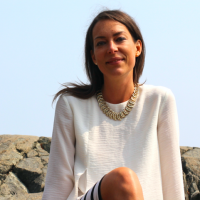![]()
At first, I was uncertain as to why I felt so compelled to do it.
However, once I began, it seemed I could not stop taking selfies in bikinis.
It may seem like a superficial practice. To some, this act might appear like the desire to grab attention or the need to seek positive reinforcement due to the shape and size of a body.
These explanations, though, have little to do with my reasons for posting pics of myself in tiny bits of lycra-infused clothing. I suspect they have little to do with many others who also choose to bare their skin over social media.
There is a torrent of selfie-inspired posts flooding our feeds today. And I, for one, am a proponent of this trend.
This is not because I believe in inflating egos by focusing on the physical. I believe it is because we have tried to pretend we are invisible—that we do not take up space, and that we each don’t carry shame around the natural body—for too long.
However, the reality for many of us is that we were taught to hide who and what we are from each other. As, when we do show ourselves, we’ve met criticism—judgements that are often the result of other people’s shame.
There are conscious reasons why I choose to share photos of myself in bikinis. The major one is that recently, I decided to step out of the fear I carried within me for 30 years—the fear of being harmed if I revealed too much of myself, specifically my skin.
This fear came from experiences of early abuse, but it also came from a general societal message that, as a female, I was meant to be appealing and pleasing, but passive and quiet too—slightly invisible seemed to be an ideal.
The above instructions are contradictory to the soul of any spirited child, and I was one of those—initially. I loved to connect, share, laugh loudly, and also be seen.
How can a female be appealing enough to please, yet passive enough to not require a space of her own?
This seemed to me to be quite the childhood conundrum, so I began to understand that if I became smaller, it would help the world feel more comfortable with who I was—especially with my femininity. So, I developed anorexia at age 12 and began a journey of restriction that continued till my late 20s.
There are certain conversations that always stay with us, no matter how long ago they were had. One conversation happened when I was six. I’m certain the thread of words that were said that day were well intended. They probably came from a place of a desire to protect, support, and love.
However, what they did instead—like so many of these “arm yourself” conversations that elders have with children—was to shame the one they intended to protect.
I had been playing with a group of boys that day, and I had gotten hurt. When I went to an adult to seek comfort, I was told that if I chose to be loud and flirtatious around males, what else did I expect?
Those words froze me in my place. I vividly recall what it felt like to hold my breath (and my hurt arm) and try to think, in my juvenile brain, how to not let this happen again.
Right, instead of being me, I would hide.
I became afraid of being seen—afraid of even being heard. I understood that these two ways of being had turned me into a symbol, and one that caused pain.
I know, for certain, it was that moment I decided to shrink.
It was with certain pain that, in my late 20s, I began to expose more of myself to the world. At that point, it felt like jabbing at a physical wound to place myself in public view. I was massively concerned with being criticized and possibly objectified, and I felt a black ball of guilt inside when I considered that perhaps the bad things that happened to me when I was young were my own fault because I was too visible.
However, as a writer, I had no choice but to allow myself to be seen; and now, as a facilitator, poet, and coach—I have even less.
Part of my personal healing and the transformational work I do with others is to realize it is healthy and good to be present in life and that allowing ourselves to shine in the world is valid, necessary, and also safe. (As adults, we can now protect ourselves, if need be.)
Another interesting thing happened—as I took up more space on this planet, my eating disorder released.
Every single person’s journey is different, but we can support each other here and now by showing up on a larger scale. As we offer our light, we encourage others to do so as well.
We can be seen without being “a symbol,” and we can be sexy too. After all, a symbol is defined as “a singular object.”
And, we all know in our hearts that an individual is exponentially more than just one thing.
~
Author: Sarah Norrad
Image: Instagram @sarah.norrad
Editor: Yoli Ramazzina
Copy editor: Nicole Cameron
Social editor: Lieselle Davidson










Read 0 comments and reply